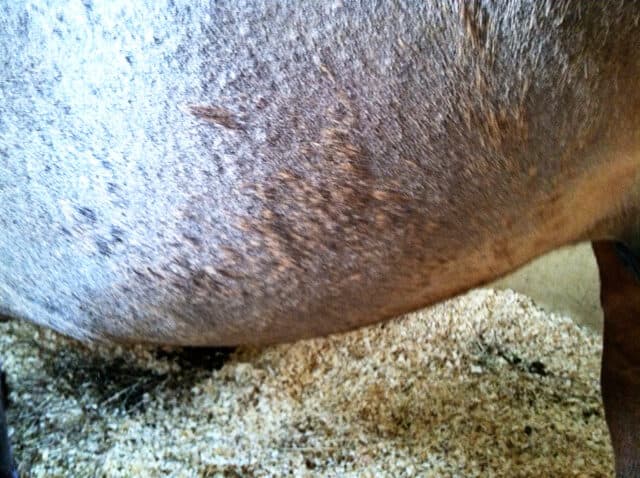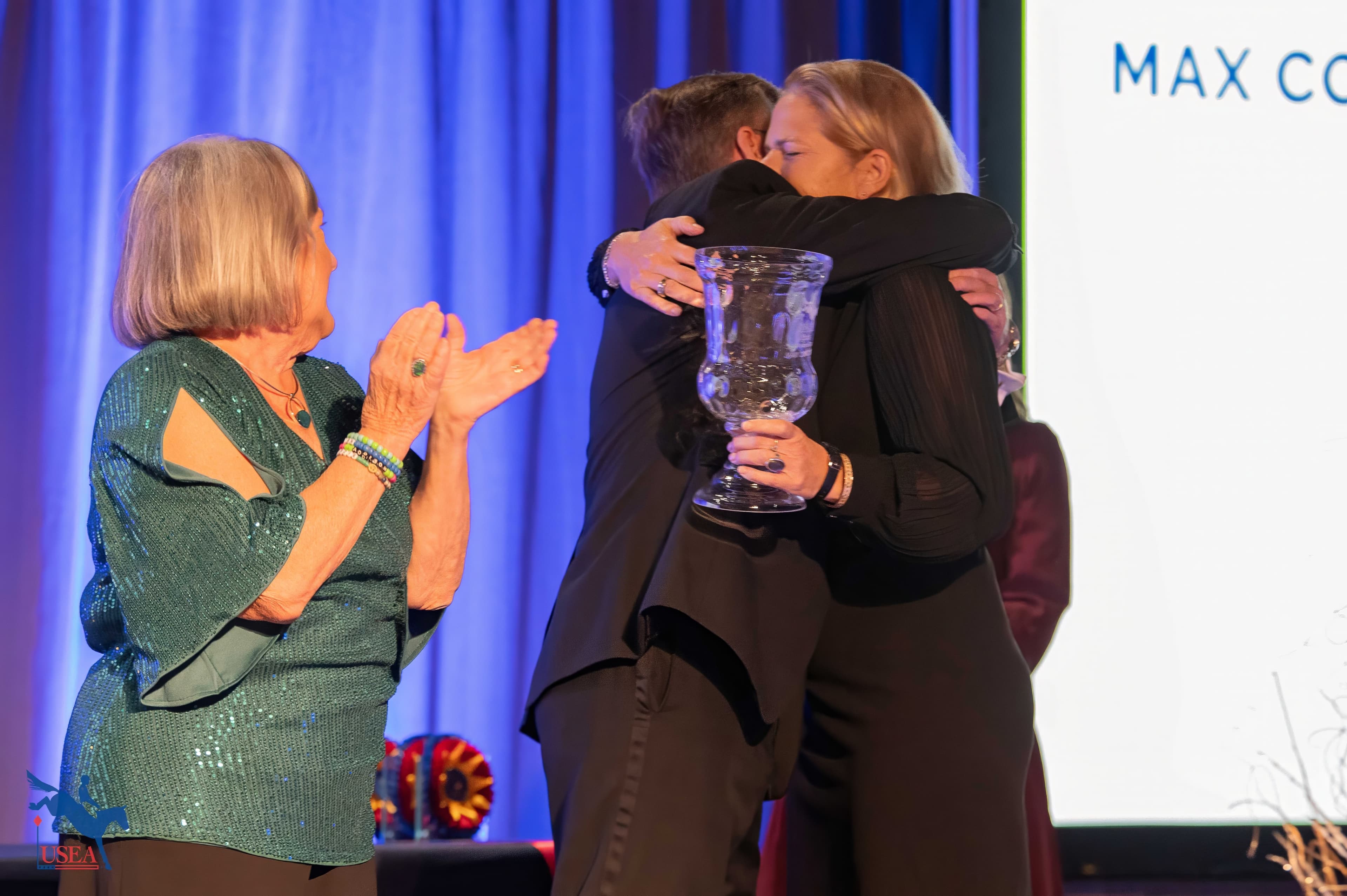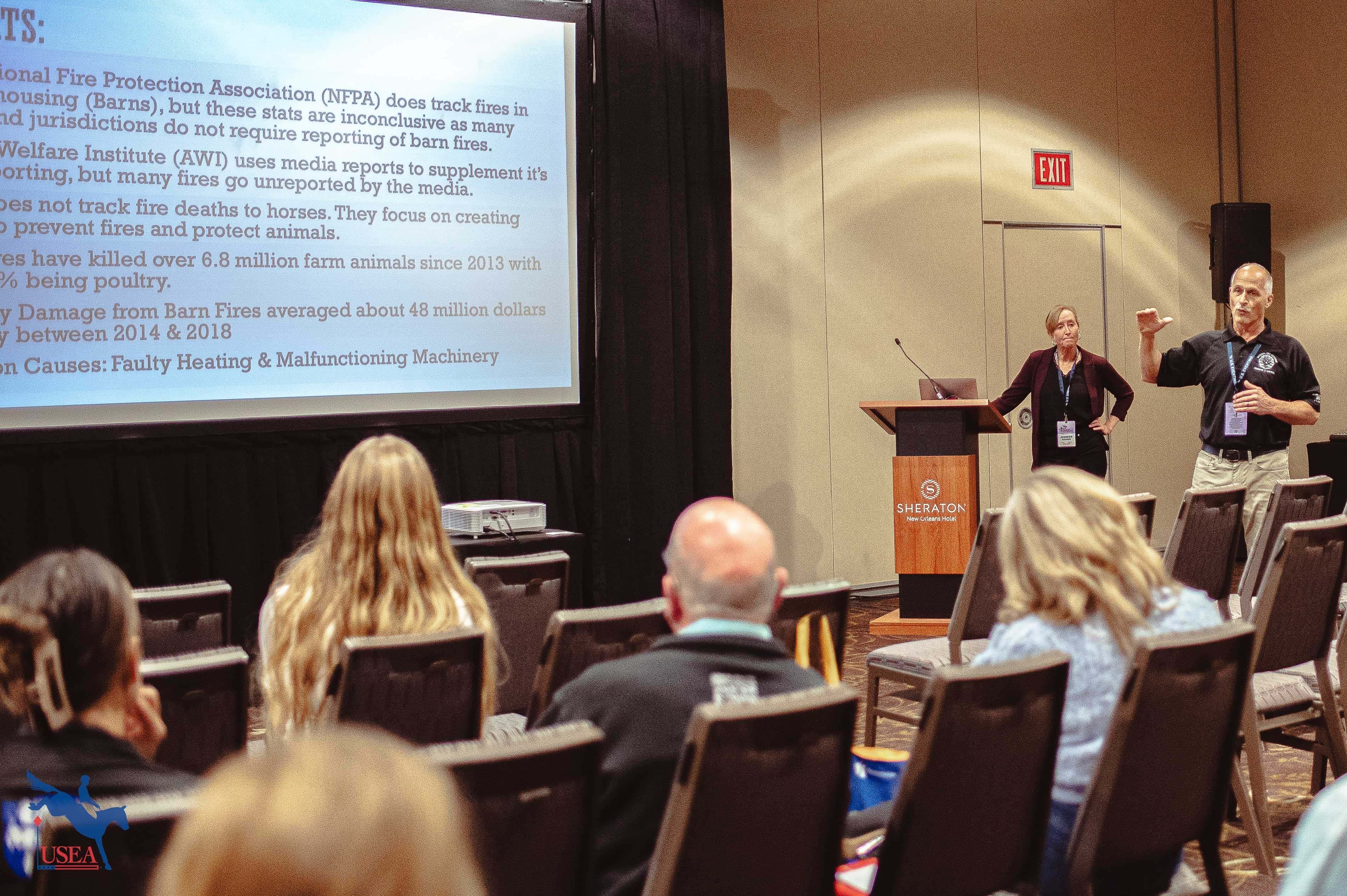Education
Rain Rot, Ringworm, Lumps, and Bumps: Skin Disease Refresher

Wet winter weather, hot summer sweating, bugs, and more - horse owners always seem to be fighting the elements against skin problems for their beloved equine. Rachael Levine, DVM of Henderson Veterinary Associates outlines an overview of common equine skin ailments and what causes them.
Skin Function & Anatomy
There are two layers to the skin. The outermost, or upper, layer is the epidermis. This layer consists of layers of cells that provide protection to the body. Under this is the dermis, or lower layer. This layer contains blood vessels, nerve endings and glands. There are two types of glands, sweat glands that produce a watery secretion and oil glands that produce an oily secretion. Sweat glands function to help cool the body surface via evaporation. Oil glands produce an oily substance called sebum, this conditions the hair and skin. Oil glands are associated with hair follicles. Also within the dermis are nerve endings. There are two types, one that feels pressure and one that feels temperature. Under the dermis is the subcutis, this area contains fat, connective tissue and further blood vessels and nerve endings. It provides insulation for the body as well as feeds the skin and keeps it attached to the underlying muscles and bones.
In all mammals, hair grows in phases. The growth phase, or anagen, is followed by the intermediate (catogen) and resting phases (telogen). After this the hair is shed and the cycle begins again. The horse’s coat sheds in patches, rather than all at once. The hairs of the mane, tail and fetlocks do not shed like the rest of the coat. The purpose of hair is for thermoregulation, protection and ornamentation.
Regular coat care is important to the overall health of your horse. Thorough grooming helps to keep the coat healthy, redistribute oils along the hair shafts and allows you to examine your horse’s skin and coat for abnormalities (aka lesions). There are many different products available on the market. If you choose to use different products on your horse, avoid any that strip the healthy oils and make the coat and skin dry.
How to Diagnose Skin Disease
Skin lesions, or abnormal areas, are a common complaint at vaccine visits. Most owners have already attempted to treat the areas themselves and it is easy to watch and worry about skin disease. A lesion is any abnormality and can include a lump, bump, hairloss, lack of shedding, crusting, itching, lack of hair or sores Some lesions will combine several abnormalities.
When attempting to make a diagnosis, there are several pieces of information that will help us. A thor-ough history is important. This includes questions like how long a lesion has been present, has it changed during this time (grown, shrunk, gone away and come back, etc), anything you have done to it or put on it, has something similar ever happened before and does it seem to bother your horse (is it itchy or painful). The appearance of the lesion is always important and helps to make a diagnosis. Is it crusty (scabby), lumpy or bumpy, haired or bald, bleeding? Where is it located on your horse?
Following a visual inspection of the appearance a skin scraping, culture and/or biopsy may be performed. The skin scraping looks for parasites or fungus in the superficial or deeper layers of the skin. Cultures look for infectious organisms such as bacteria or fungus. Biopsies are important to identify the structure of the skin on a microscopic level and for diagnoses of masses. Biopsies can also be used for culture.
Finally, response to therapy is an important part of determining the underlying cause of a skin lesion. This includes any therapies chosen by the owner. It is important to keep track of what does and does not work and how long it works for. This helps us to further determine next treatment steps.
Crusty Diseases:
Rain rot & Scratches: caused by water getting trapped under the skin. This wet environment causes the skin to ooze serum. At the same time, bacteria and/or fungus begin to thrive in this moist environment. The serum forms a crust within the hair and a cycle is set up, perpetuating the formation of additional crusts and infection. In some cases, the infection may progress down into the skin and cause cellulitis and/or lymphangitis. This requires immediate veterinary attention. Treatment of scratches and rain rot requires removal of the scabs. The bacteria and fungus that cause these diseases can be contagious, after removing the scabs you should throw them away and wash your hands and any tools needed to perform this task. Scabs can be softened with BagBalm® or other ointments and bathing and clipping are helpful. Based on your horses case, different shampoos or ointments maybe recommended for further treatment.
Aural plaques: are white plaques on the insides of the ears. These are not caused by a fungus, but rather by a virus. Most often treatment is with benign neglect (ignoring it), however in some cases treatment with topical creams is recommended.
Cannon Keratosis: this greasy build up on the font of the hind cannon bones is sometimes caused by over production by the oil glands and sometimes by smegma for a horse’s sheath. Removal requires bathing with a grease cutting soap, such as a gentle dish soap. The hair may fall out in these areas.
Sunburn: this is caused by over exposure to UV rays. Some horses, especially those with pink skin on the nose, are prone to sunburn. Other disease processes, especially liver disease, can predispose horses to sunburn. If your horse has severe sunburn you should contact your veterinarian. Treatment includes utilization of UV protective masks, sunscreen or zinc oxide and treatment of any underlying disease, if possible.
Ringworm: is caused by a fungal infection. This disease is contagious horse to horse and horses to people. Circular, hairless lesions are common. Treatment is with antifungal topical sprays, shampoos and ointments. Few horses require systemic treatment. Make sure to dedicate brushes, blankets, tack and other items to individual horses to prevent spread of disease, wear gloves and wash your hands after handling infected horses.
Itchy Diseases:
Insect Allergies, including Sweet Itch: Sweet Itch is caused by an allergy to midges in the Culicoides family. Symptoms include crusting and swelling along the belly, especially in front of a sheath or udder. Some horses are more sensitive than others. Treatment includes preventing the midges from biting the horse, if possible. These include fly sprays, sheets and blankets. Sometimes steroids are helpful to decrease the itching and may be used topically or systemically, depending on the individual situation.
Lumpy & Bumpy Diseases:
Not all lumps and bumps are caused by neoplasia (cancer). About 30% of lumps and bumps are can-cerous. Non-cancerous examples include scars, abscess and hives.
Abscesses: can be old or new. New abscess are often softer and if they result from a hematoma may be sterile (not infected). Old abscesses are often hard, and may occasionally drain from areas. New abscesses are treated with lancing, flushing and drainage. Older abscesses may require surgical removal.
Hives: result from an allergic reaction. Often the allergy is to something eaten, however can be something applied topically, something in the environment, insects, drugs, etc.
Warts: are only seen in young horses. Caused by the Equine Papilloma Virus, they are found on the nose and muzzle. They are self-limiting and go away as the horse ages.
Neoplasia (Cancerous Lumps): the three most common types of skin cancer in horses are sarcoids, melanomas and squamous cell carcinomas.
Sarcoids: in many causes (but not all) it is thought to be caused by the Bovine Papilloma Virus. There is also some evidence that some horses may be more predisposed to getting sarcoids. There are numerous types of sarcoids, characterized based on their appearance. This includes occult (flat), verrucose (crusted and wart like), nodular and fibroblastic. Some horses may have more than once sarcoid, and may have differ-ent types of sarcoids. Sarcoids are most commonly found on the head and ears, however they can be found any where on the body. Treatment is variable, depending on location, and no one treatment is considered curative. In some cases, benign neglect (ignoring) the sarcoid is used. Removal, topical therapy, cryotherapy (freezing) and/or vaccination with pieces of tumor have all been explored. Depending on the location, size and type of sarcoid, different recommendations may be made.
Squamous Cell Carcinoma: is found at mucocutaneous junctions, such as the eyes, vulva and penis. Most commonly associated with pink skin, it is thought to be due to an overexposure to UV radiation in some cases. Treatment includes removal and local chemotherapy. Freezing has been used in some cases. Recommendations are based on specifics associated with each individual case.
Melanoma: most commonly found in grey horses, melanomas are most commonly found on the dock, perianal region, within the sheath and near the parotid salivary glands. Treatment is variable, including benign neglect, removal, chemotherapy, vaccination with pieces of tumor and cimetidine. Recommendations are based on individual cases.
A few miscellaneous skin ailments:
Anhydrosis: failure to sweat appropriately. Rarely seen in our area. If you notice this about your horse, please contact your veterinarian.
Hirsutism:failure to shed appropriately. Can be an indicator of hormonal imblanaces, especially Cushing’s disease.
Alopecia: lack of hair. Difficult to treat and diagnose. Often requires skin biopsies. Very rare in horses.
Take home messages:
Skin disease can be frustrating to treat. Often horse owners try to treat it before contacting their veteri-narian. If this is the case, keep track of the products you use, as this may be helpful later to determine further treatments. There are many products available on the market, but avoid products that strip the oils from your horse’s coat. Regular grooming is important for overall skin and coat health, as well as monitoring for lesions. Skin disease can be contagious, both horse to horse and horse to human. Not all lumps and bumps are cancerous. Sarcoids, squamous cell carcinoma and melanoma are the most common types of skin cancer seen in horses. Removed is often the best treatment, and is best attempted early, when the lumps are small. As al-ways, any questions about your horse should be directed to your veterinarian.
About the Author
Dr. Rachael S. Levine is originally from the northwest corner of Connecticut and grew up owning and riding horses. She was an active member in her local Pony Club throughout high school, both competing and teaching riding lessons. She received her Bachelor of Science degree from Elizabethtown College. Following this, she attended the Tufts University Cummings School of Veterinary Medicine in Massachusetts. Her veterinary interests include reproduction and lameness. In her free time, she enjoys riding her horse Ciao, reading and baking. Dr. Levine works at Henderson Veterinary Associates.














